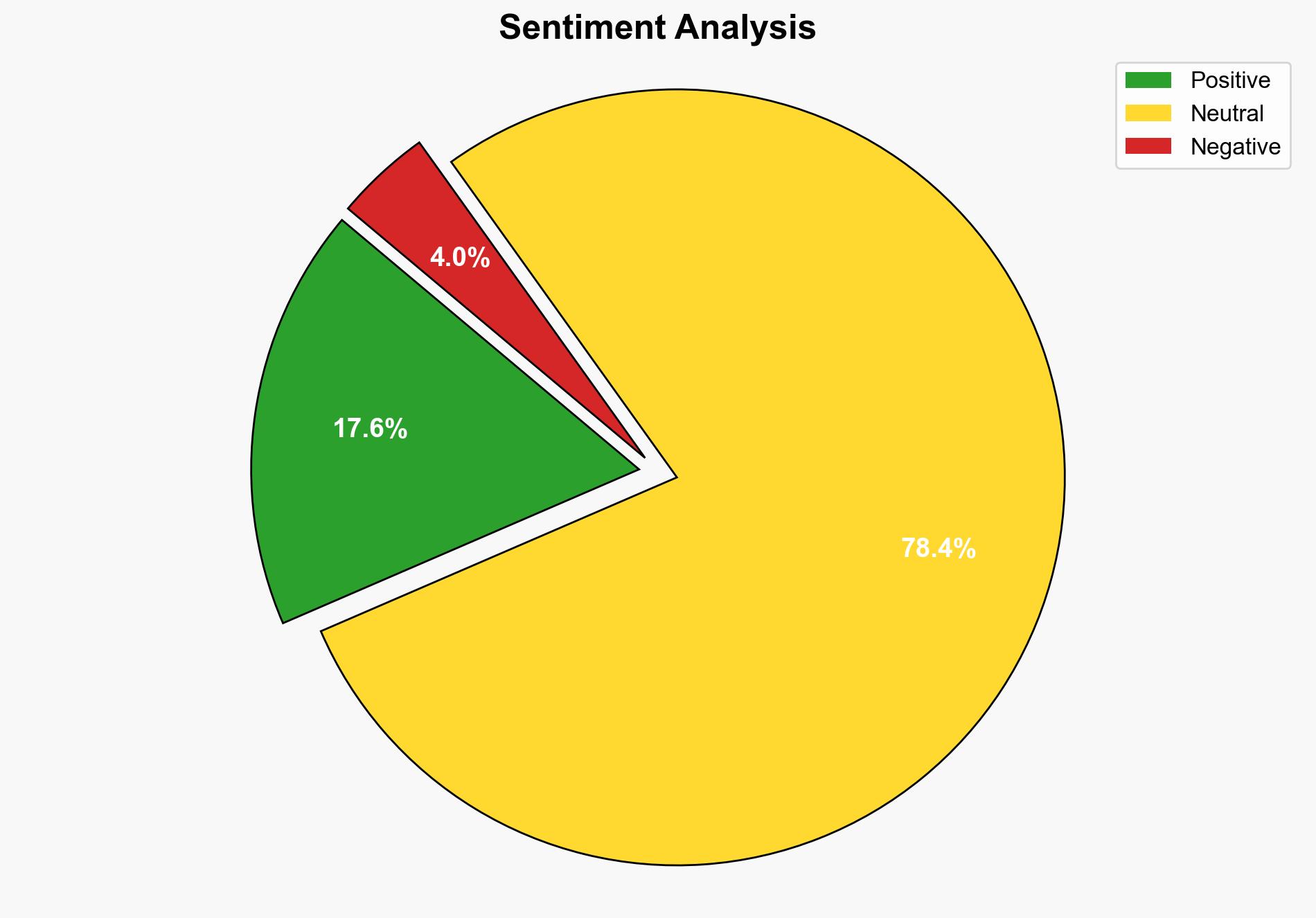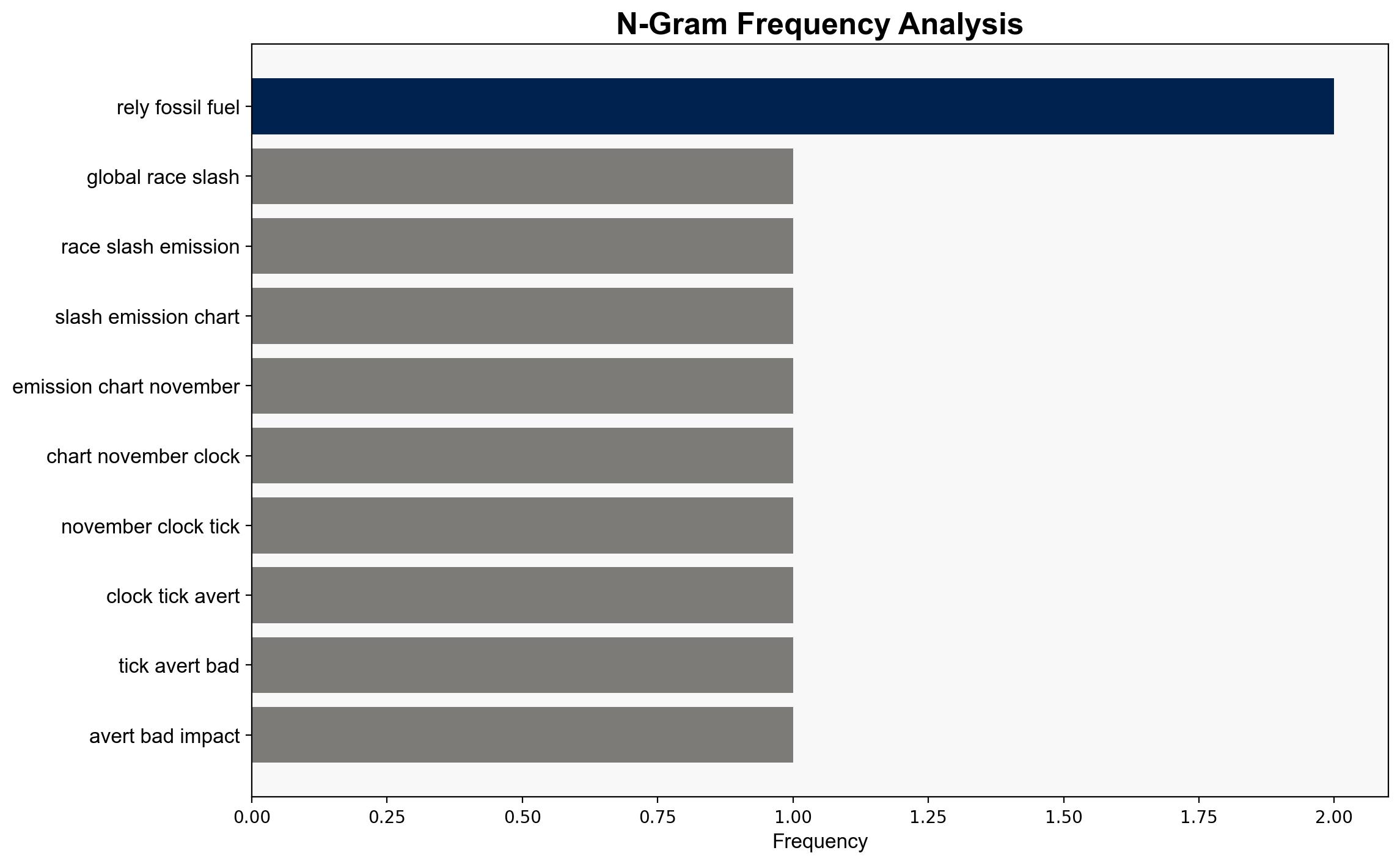The global race to slash emissions in nine charts – DW (English)
Published on: 2025-11-05
Intelligence Report: The global race to slash emissions in nine charts – DW (English)
1. BLUF (Bottom Line Up Front)
The most supported hypothesis is that the global transition to renewable energy is progressing but at an insufficient pace to meet the Paris Agreement targets. Confidence level: Moderate. Recommended action: Accelerate investment in renewable energy infrastructure and technology, and enhance international cooperation to phase out fossil fuels.
2. Competing Hypotheses
Hypothesis 1: The global shift towards renewable energy is on track to meet the Paris Agreement goals by 2050. This hypothesis is supported by the steady growth in renewable energy adoption and increased investment in carbon-neutral technologies.
Hypothesis 2: The current pace of transition to renewable energy is inadequate to meet the Paris Agreement targets, primarily due to continued reliance on fossil fuels and slow adoption of renewable technologies in key regions.
Using ACH 2.0, Hypothesis 2 is better supported due to evidence of ongoing high fossil fuel consumption in major economies and the slow rate of renewable energy integration in sectors like transportation and heating.
3. Key Assumptions and Red Flags
Assumptions include the belief that technological advancements will continue to drive down the cost of renewables and that political willpower will align with environmental goals. Red flags include potential underreporting of fossil fuel dependency and overestimation of renewable energy capacity growth. There is also a risk of cognitive bias towards optimism in technological solutions.
4. Implications and Strategic Risks
Failure to meet emission reduction targets could lead to severe climate impacts, economic instability, and geopolitical tensions over resource allocation. The slow transition poses risks to energy security and could exacerbate regional disparities, particularly in fossil fuel-dependent economies. There is a potential for cascading threats, such as increased natural disasters and forced migration.
5. Recommendations and Outlook
- Accelerate global investment in renewable energy infrastructure, focusing on regions heavily reliant on fossil fuels.
- Enhance international collaboration to share technology and best practices for emission reduction.
- Scenario-based projections:
- Best Case: Rapid technological advancements and policy shifts lead to significant emission reductions, meeting Paris targets by 2050.
- Worst Case: Continued reliance on fossil fuels results in failing to meet targets, exacerbating climate change impacts.
- Most Likely: Incremental progress with mixed results across regions, requiring intensified efforts to close the gap.
6. Key Individuals and Entities
Entities include the International Energy Agency (IEA), Global Energy Monitor, and Climate Analytics. These organizations provide critical data and analysis on energy consumption and climate policy.
7. Thematic Tags
national security threats, energy transition, climate policy, renewable energy, geopolitical risks





